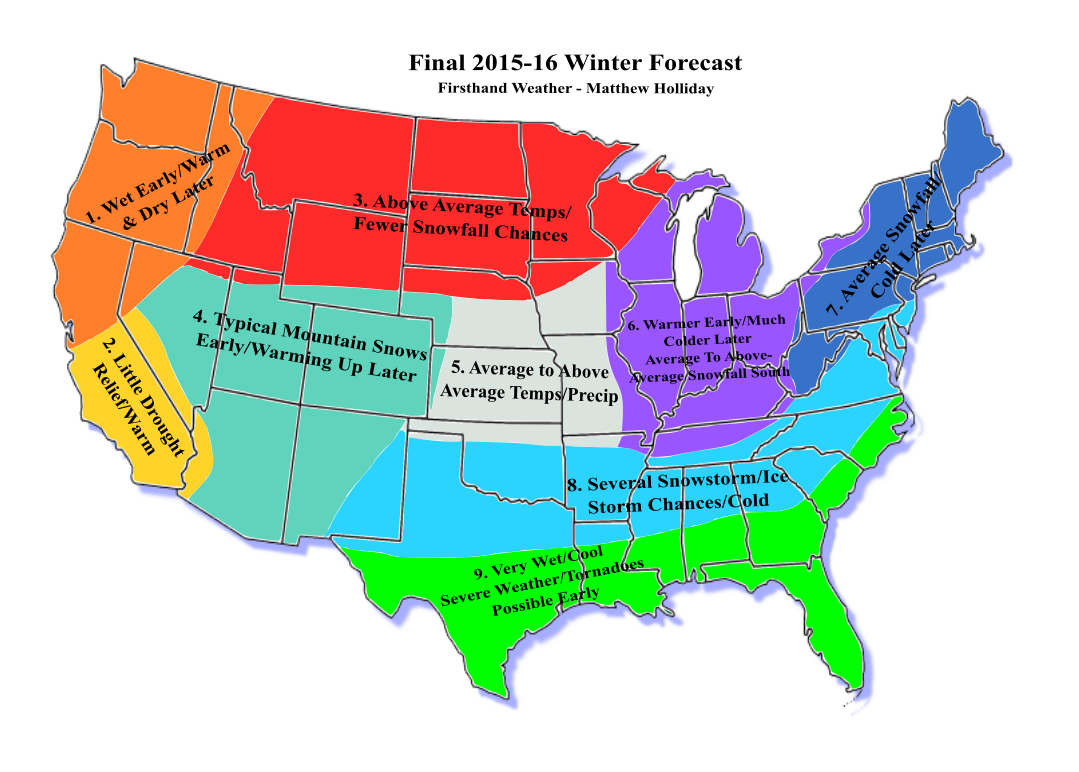Forecast Model Predicts Another Cold Winter For U.S.
As many of you know, I tend to not be a big fan of forecasts based primarily on forecast model guidance and am a firm believer that models should only be used as tools to aid in improving forecast accuracy. If we’re lucky, these tools do okay for about a week out, but beyond that, they’re pointless, especially long-range climate models that attempt to predict an upcoming winter for example.
However, I do (skeptically) follow the Jamstec model, which has done a fairly good job at making predictions several months in advance, at least for the U.S. It’s far from perfect, but I am always curious to see what it’s new output is each month. Of course, it wouldn’t change my winter forecast if it were to show the exact opposite of what I was predicting.
Let’s start with the projected temperature anomaly map that is for this upcoming December, January and February. Please keep in mind that these are NOT actual temperatures, so this isn’t saying it’s going to be warmer in Canada than in parts of the U.S. It’s trying to depict where colder/warmer than average temps will be located over the span of these three months combined.
This has a very El Nino look to it, but there are some key differences compared to previous strong El Nino winters. While I’m predicting El Nino to persist through the winter, it could start to really fade later in the winter. This winter will not likely be a blowtorch for the entire United States like 1997-98 and 1982-83 was. This El Nino will likely be atypical in certain aspects.
Next, take a look at the precipitation anomaly map. It has wetter conditions from California to Texas into the Gulf Coast states, while it has the Tennessee Valley into the Ohio Valley as very dry. This is still very El Nino-ish.
Lastly, we get to the sea surface temperature anomaly map. As you can see, it has warmer than average sea surface temperatures across the central and eastern equatorial Pacific, but it also has the warm pool persisting over the Gulf of Alaska and extending southward off the West Coast. This would be the third winter in a row that this northeast Pacific warm pool is present, which has been responsible for the brutal cold (and West Coast warmth) in the U.S. the last two winters.
Although most of you have seen this, I just want to share my winter forecast that was released this past July. You can sort of compare and contrast my forecast to the graphics above, which is really just for fun. In reality, you have to take long-range models with a grain of salt, even though this particular model has done a bit better than other models. Click here to get your region-by-region winter breakdown, and click here to read my detailed analysis.
As I have mentioned, this upcoming winter is going to be a forecasting headache. I’d say that it’ll be much harder to nail down than the previous two. Since there are really no previous years that compare closely to what is currently happening, a purely analog-based approach isn’t going to really work. I actually don’t take a purely analog-based approach in my seasonal forecasts anyway, although I do extensive research on previous winters.
I’ll really begin sharing more of my research on this upcoming winter in October and will release my final winter forecast sometime in November.

